Video of the Week:
When to Pick Tomatoes
Flowers:
Dividing Iris
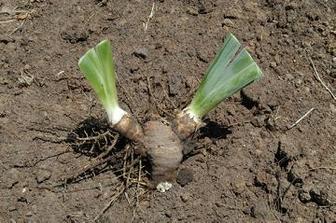
Iris may be divided from late July through August,but late July through early August is ideal. Because iris clumps are fairly shallow, it is easy to dig up the entire clump. The root system of the plant consists of thick rhizomes and smaller feeder roots. Use a sharp knife to cut the rhizomes apart so each division consists of a fan of leaves and a section of rhizome. The best divisions are made from a double fan that consists of two small rhizomes attached to a larger one, which forms a Y-shaped division. Each of these small rhizomes has a fan of leaves. The rhizomes that do not split produce single fans. The double fans are preferred because they produce more flowers the first year after planting. Single fans take a year to build up strength.
Rhizomes that show signs of damage due to iris borers or soft rot may be discarded, but you may want to physically remove borers from rhizomes and replant if the damage is not severe. It is possible to treat mild cases of soft rot by scraping out the affected tissue, allowing it to dry in the sun and dipping it in a 10 percent solution of household bleach. Make the bleach solution by mixing one-part bleach with nine parts water. Rinse the treated rhizomes with water and allow them to dry before replanting.
Cut the leaves back by two-thirds before replanting. Prepare the soil by removing weeds and fertilizing. Fertilize according to soil test recommendations or by applying a complete fertilizer,such as a 10-10-10, at the rate of 1 pound per 100 square feet. Mix the fertilizer into the soil to a depth of 6 inches. Be wary of using a complete fertilizer in areas that have been fertilized heavily in the past. A growing number of soil tests show phosphorus levels that are quite high. In such cases, use a fertilizer that has a much higher first number (nitrogen) than second(phosphorus). (Ward Upham)
Vegetables:
Blossom-End Rot
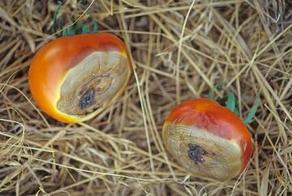
- This year, inconsistent amounts of water may be a factor for our squash. This can be due to watering practices or may be due to heavy rains followed by dry periods. Try to keep soil moist but not waterlogged. Mulching can help by moderating moisture levels over time.
- Vegetable tops will sometimes outgrow the root system during cooler spring weather. This is especially true of tomatoes. As long as it is cool, the root system can keep up. When it turns hot and dry, the plant has a problem, and water —with the calcium it carries — goes to the leaves and the fruit is bypassed. The plant responds with new root growth and the condition corrects itself after a couple of weeks.
- Heavy fertilization, especially with ammonium forms of nitrogen, can encourage this condition. Heavy fertilization encourages more top than root growth and the ammonium form of nitrogen competes with calcium for uptake.
- Anything that disturbs roots such as hoeing too deeply can encourage blossom-end rot. Mulching helps because it keeps the soil surface cooler and therefore a better environment for root growth.
There are some years you do everything right and the condition still shows up due to the weather. In such cases, remember that blossom-end rot is a temporary condition, and plants should come out of it in a couple of weeks. You may want to pick off affected fruit to encourage new fruit formation.
Soils with adequate calcium will not benefit from adding additional calcium. If your soil is deficient in this nutrient, add 1 pound gypsum per 100 square feet. Gypsum is calcium sulfate and will not affect pH. Though calcium raises pH, sulfate lowers it and the two cancel each other out. Even if not needed, gypsum will not hurt anything.
We have also found that spraying plants with calcium doesn't work. The fruit's waxy surface doesn't allow absorption of the material and calcium does not move from the leaves to the fruit. (Ward Upham)
Ornamentals:
Bark Shedding
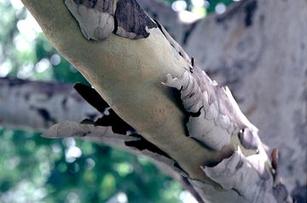
Pests:
Walnut Caterpillars
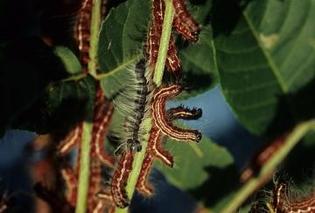
Walnut caterpillars overwinter as pupae underground beneath host trees. In late spring, moths emerge and deposit egg clusters on lower leaves. By the end of June, newly emerged and gregarious larvae skeletonize leaves. Larger hairy,brick-red larvae consume greater amounts of leaf tissue, and nearly matured gray larvae devour entire leaves, including petioles.
As mentioned earlier, walnut caterpillars are gregarious. In other words, they feed in groups. A single tree may contain several groups. When disturbed, larvae arch their bodies in what looks like a defensive move. Larvae crowd together on the lower parts of trees to molt and leave an ugly patch of hairy skins. Mature larvae, 2 inches long, descend or drop to the ground where they enter the soil to pupate. A second generation occurs soon, creating the overwintering pupae.
Removing leaves with egg masses is an effective way to control walnut caterpillars. This may be impractical with large trees or when too many infested leaves are present. Bands of Tree Tanglefoot pest barrier may be used to snare larvae as they migrate to main branches or the trunk to molt. Insecticides such as spinosad (Conserve; Captain Jack’s Dead Bug Brew; Borer, Bagworm, Leafminer and Tent Caterpillar Spray) permethrin (numerous trade names) malathionor cyfluthrin (Tempo, Bayer Vegetable and Garden Insect Spray) may provide the most practical means of control. (Ward Upham)
Flatid Planthoppers
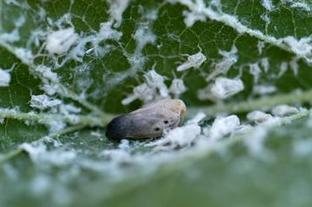
Plant injury due to these insects is usually minor. Feeding by large populations may cause death of seedlings or wilting of small twigs of larger plants. Control is usually not recommended because natural enemies often keep flatid planthoppers in check. If control is warranted, a strong stream of water from a hose should knock them off or a number of insecticides may be used including malathion, permethrin, cyfluthrin, and bifenthrin. For a detailed description, check out the University of Georgia Bugwood page.(Ward Upham)
Squash Bug Control
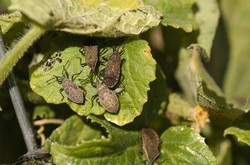
Contributors: Ward Upham, Extension Associate
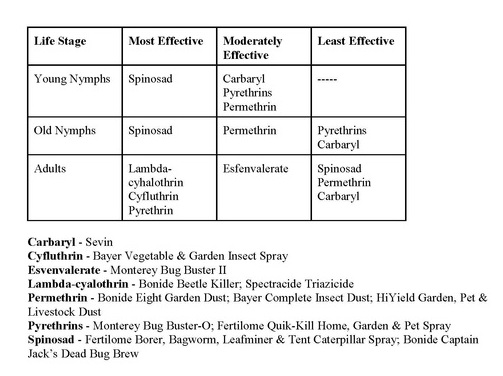
 RSS Feed
RSS Feed
